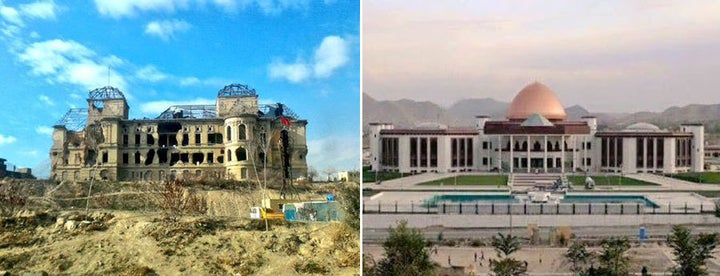
Afghanistan's new Parliament building is said to be a gift to the people of the war-ravaged country from India, one of the world's largest democracies, to help its transition to peace and stability. It was inaugurated by Prime Minister Narendra Modi during his visit to Kabul on Friday.
The building, which combines the influence of both Mughal and modern architecture, was constructed by India at a cost of USD 90 million and started in 2007 as a mark of friendship and cooperation to help rebuild Afghanistan.
The work was undertaken by the Central Public Works Department of the Government of India and has Asia's largest dome as one of its key features. It took shape between the decades-old historic landmarks -- the King's Palace 'Darul Aman' and the Queen's Palace -- that bore the marks of the war.
The CPWD used white marble from Makrana in Rajasthan, among other places, for the outer cladding. The building has four main blocks - House of People, Officers, Entrance Lobby and Senate Hall. The edifice has two domes -- an outer copper clad dome of 32 meter diameter and 17.15 meter height covering the main assembly hall and one of glass on the Entrance Lobby.
"Past & Future. On 1 side the Dar ul Aman palace bombed out by Taliban. On the other the shining new Parliament bldng," tweeted Vikas Swarup, spokesperson of the Ministry of External Affairs, as Modi met Afghan President Ashraf Ghani.

(With PTI inputs)



Contact HuffPost India
Also see on HuffPost:
